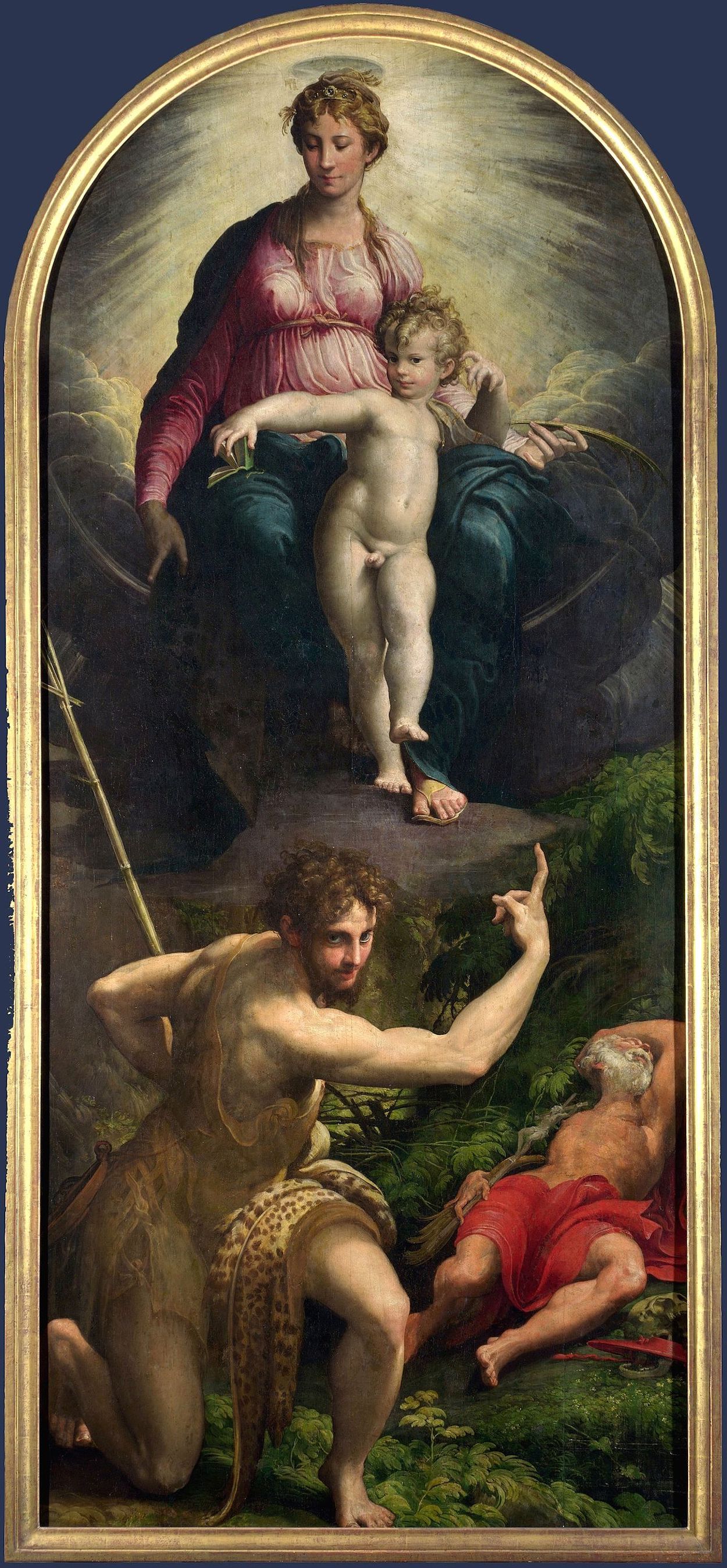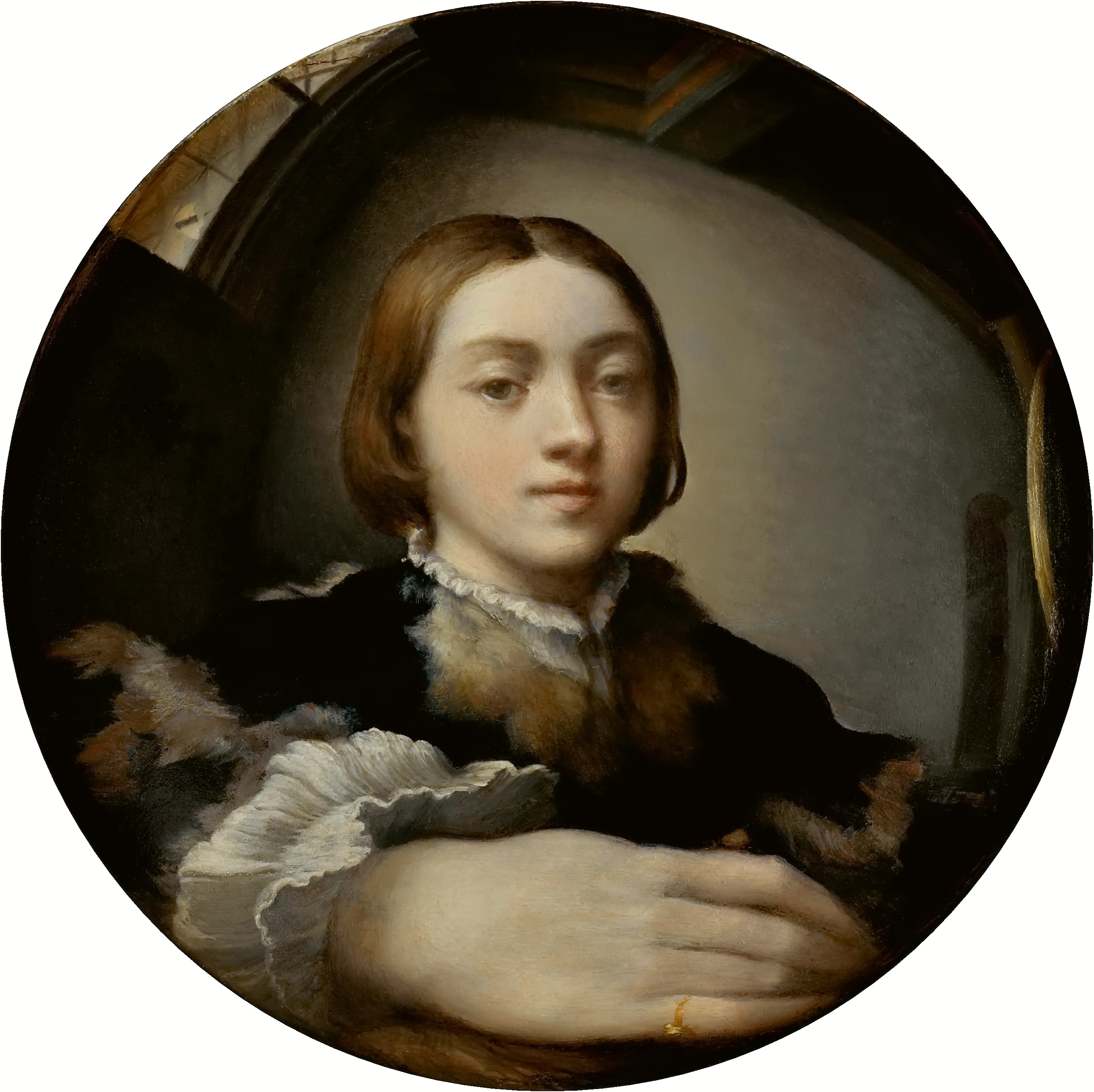On this day in 1503, Girolamo Francesco Maria Mazzola also known as Parmigianino was born. He was an Italian Mannerist painter and printmaker active in Florence, Rome, Bologna, and his native city of Parma. His work is characterized by a refined sensuality and often elongation of forms. He remains the best known artist of the first generation whose whole careers fall into the Mannerist period.
The work was commissioned on 3 January 1526 in Rome, by Maria Bufalini, wife of Antonio Caccialupi, to decorate the family chapel in the church of San Salvatore in Lauro. The elongated shape derives from its original destination as part of a triptych, whose sides (never painted) should represent the Immaculate Conception (to which the chapel was dedicated) and the saints Joachim and Anna.
According to late Renaissance art biographer Giorgio Vasari, Parmigianino was working on this painting during the Sack of Rome, and he had to stop when the city was ravaged by the imperial troops. He was able to escape paying a ransom, while his uncle remained in Rome, being able to hide the painting in the refectory of Santa Maria della Pace.
In 1558 the Bufalini family decided to move it in their chapel in Sant'Agostino at Città di Castello, from where it was acquired in 1790 by the English painter James Durno. In England, it was sold to the Marquess of Albercon for 1,500 guineas, then, after a series of changes of hand, to the National Gallery in 1826.
If you would like to know more about the artist, take a look at the article "Everything You Must Know About Parmigianino".


 Parmigianino
Parmigianino